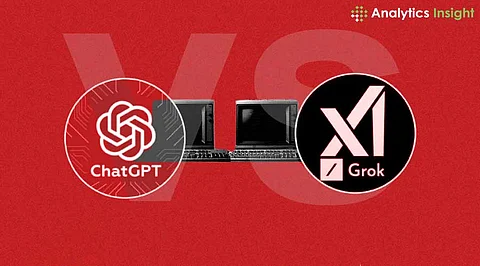OpenAI’s Lead vs. Grok 3’s Edge: Redefining AI Chat
The race for AI leadership is intensifying, and Elon Musk’s xAI is making a bold statement with Grok 3. As OpenAI’s ChatGPT continues to set the standard for conversational AI, Grok 3 is pushing the boundaries of real-time reasoning, mathematical intelligence, and multimodal capabilities.
OpenAI’s ChatGPT vs Grok 3 competition is not just about technological one-upmanship. It is also driven by the rivalry and the opposing ethical views of Sam Altman and Elon Musk, ever since the Tesla CEO walked out of OpenAI’s leadership role.
The Challenge to OpenAI’s Dominance
OpenAI’s models, particularly ChatGPT, have long been the benchmark for smooth and structured AI conversations. Its ability to maintain context, offer clear explanations, and handle a broad range of queries has cemented its place in the industry. Grok 3, on the other hand, focuses on technical reasoning, real-time problem-solving, and dynamic adaptability.
ChatGPT is optimized for logical structure and refined interaction, whereas Grok 3 gives a data-driven and research-based output. Grok 3's DeepSearch allows it to quickly grab current information, an area where ChatGPT lags because of its pre-trained nature. This translates to Grok 3 being able to converse on breaking news, developing scientific hypotheses, or market trends more accurately. Thus, placing it ahead in real-time data analysis.
AI’s New Battlefront: Intelligence vs. Engagement
The biggest difference is between how Grok 3 and ChatGPT solve problems. Grok 3 excels in math and logical reasoning, scoring an impressive 93.3% in standard math tests compared to ChatGPT’s 79%. Its Think Mode allows it to break down complex problems step by step, mirroring human-like analytical processes.
ChatGPT, on the other hand, is still the go-to model for conversational AI. Its continuity, contextual sense, and capacity to create natural conversations make it the favorite, especially when it comes to creative writing, tutoring, and engaging discussions. Even though Grok 3 might provide more in-depth information, its habit of over-explaining makes it less convenient for informal conversations.
Another key battleground is multimodal AI. OpenAI’s DALL·E models are industry leaders in AI-generated images. However, Grok 3 is not so far behind; it also offers hyper-realistic image generation and efficient visual data processing. Thus, hinting at a future where AI doesn’t just talk but sees, understands, and creates.
The Real-World Stakes
This war is not solely about tech; it is about capturing market share and global leadership. OpenAI has a broad scope with a place in various industries, including customer care, education, and business AI tools. While Grok 3 has gone deep with X (Twitter). It is a real chance to rethink the AI integration into social media, news, and financial platforms.
The Future of AI
As Grok 3 and ChatGPT both advance, their capabilities will probably meet somewhere in the middle. Grok 3 is getting better at conversation flow as ChatGPT improves its real-time reasoning. OpenAI’s dominance has forced xAI’s Grok 3 to redefine what’s possible. In response, OpenAI will have to push the envelope further to maintain its position.
AI is no longer being used just to answer questions. It's now about thinking, reasoning, and adjusting, a complete industry-wide shift fueled by the intense competition of OpenAI vs Grok3. However, for AI users, this competition is a win-win. Humans now have access to AI that is smarter, faster, and more intuitive than ever before.
.png)

